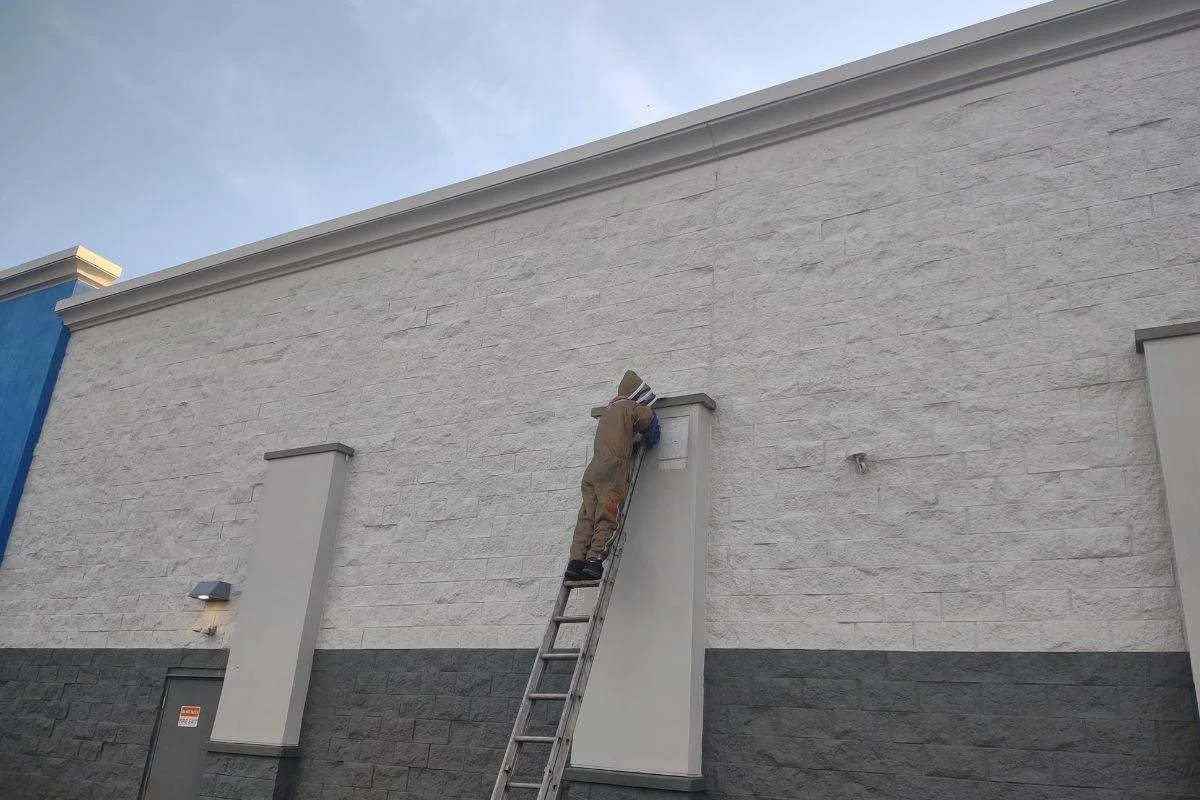What Not to Do If You Find a Beehive at Home.
Discovering a beehive near your home or business can be alarming. You may feel an urge to act fast—grabbing a can of bug spray, swatting at flying bees, or trying to remove the hive yourself. Stop right there. Acting without understanding can be dangerous, both to you and the bees.
Bees play a vital role in our ecosystem as pollinators, and many species are protected under law. At the same time, unmanaged hives in walls, attics, or trees can become a hazard. So, what’s the right way to respond?
In this blog post, we’ll cover what not to do if you discover a bee hive, why those actions can cause harm, and what you should do instead.
🚫 1. Do NOT Spray Chemicals or Insecticides
It may be tempting to treat a beehive like a regular pest problem by spraying it with insecticide. However, this is one of the worst things you can do.
Why it’s harmful:
Bees are pollinators; killing bees with toxic sprays disrupts the local ecosystem and contributes to the decline of pollinators.
You could provoke an attack: Spraying can agitate the colony, increasing your chances of being stung.
It doesn’t solve the problem: Even if some bees die, the queen and most of the colony often remain inside, continuing to grow.
What to do instead:
Call a professional live bee removal service. They can relocate the hive safely, without harming the bees or damaging your property.
⚠️ 2. Do NOT Block the Entrance
Some people try to stop the bees by sealing their entry poin with foam, caulk, or tape. While this seems logical, it can lead to bigger problems.
Beehive at Home
Why does this backfire?t
Bees may find another way out—inside your home.
You trap thousands of bees inside, and they may die and decompose in your walls, creating foul smells and attracting ants, cockroaches, and rodents.
It makes professional removal harder later on.
What to do instead:wit The entry point is useful for identifying hive placement inside your structure.
🚷3. Do NOT Try to Remove It Yourself
Bee hives, especially in structures like walls or attics, are complex and dangerous to remove without training.
The risks of DIY removal:
Bee stings: Without protective gear, a swarm can quickly become a medical emergency, especially if you're allergic.
Structural damage: Improper removal can lead to holes in walls, collapsed ceilings, or broken insulation.
Incomplete removal: Leaving behind wax, honey, or dead bees can result in mold, ants, and recurring infestations.
Let the pros handle it:
Trained bee removal specialists know how to safely open walls, remove the hive, clean residue, and close everything back up properly.
🧯 4. Do NOT Light Fires or Smoke Near the Hive
Some online videos or old myths suggest using smoke or fire to drive bees away. This is extremely dangerous and irresponsible.
Here’s why:
You risk starting a house fire or wildfire.
Smoke can cause bees to become more aggressive, not less.
It doesn’t guarantee relocation; they may just move deeper into the structure.
Better alternative:
Beekeepers sometimes use smoke as a calming tool, but in controlled, expert-level scenarios, not DIY attempts.
🧃 5. Do NOT Leave Sweet Drinks or Food Nearby
If you discover a hive, avoid placing soda cans, fruit, or sugary substances near the area. You might think it will lure the bees away. In reality, it makes the situation worse.
Why it's a bad idea:
Bees are attracted to sugar and may become more active or aggressive.
It can draw even more bees from other colonies.
You're increasing the chances of getting stung, especially by accident.
Stay clear instead:
Minimize food sources and keep your distance from the hive area until help arrives.
📣 6. Do NOT Agitate the Hive with Loud Noise or Vibration
Hidden beehive inside residential siding
Loud music, banging on the walls, or using machinery near the hive can trigger bees to go into defensive mode.
The danger:
Bees interpret vibration and noise as a threat. If the hive feels under attack, the colony may swarm and sting in defense, sometimes as a group.
Be calm and quiet:
If you must be nearby, move slowly, avoid sudden noises, and don’t attempt any activity that could disturb the hive.
🧱 7. Do NOT Assume It’ll “Go Away on Its Own
Sometimes people wait, hoping the bees will relocate naturally. Unfortunately, hives only get bigger and more entrenched over time.
Why you shouldn’t wait:
Bee colonies grow rapidly—up to 60,000 bees in a few weeks.
The longer it’s there, the harder and more expensive it is to remove.
Honey and wax can melt or leak into walls, damaging insulation and drywall.
Take action early:
Calling a professional early makes for a safer, cheaper, and easier removal process.
🐝 What You SHOULD Do Instead
Now that you know what not to do, here’s what you should do if you discover a beehive:
✅ Step 1: Observe from a Safe Distance
Look for signs of activity, but don’t get too close. Take note of:
Entry and exit points
Approximate size or location
Time of day when bees are most active
✅ Step 2: Call a Professional Bee Removal Company
Look for a company that offers live bee relocation and has experience with structural hives. In Florida, for example, Eco Bee Removal provides safe, eco-friendly solutions that protect both your home and the bees.
✅ Step 3: Bee-Proof Your Property (After Removal)
Once the hive is removed, seal openings, install mesh over vents, and trim back vegetation to prevent bees from returning.
🛡️ Protect Yourself, Your Property, and the Bees
Bees are not your enemy, but their hives can pose a serious challenge if mishandled. By avoiding dangerous, harmful DIY actions and calling in a trained expert, you help:
Protect your home
Avoid injury
Support vital pollinators
Prevent long-term infestations
📞 Need Help with a Bee Hive?
If you're in Florida and need help removing a hive, Eco Bee Removal is here to help. We offer humane, eco-friendly bee relocation, even for difficult cases like hives in walls, attics, or roofs.


